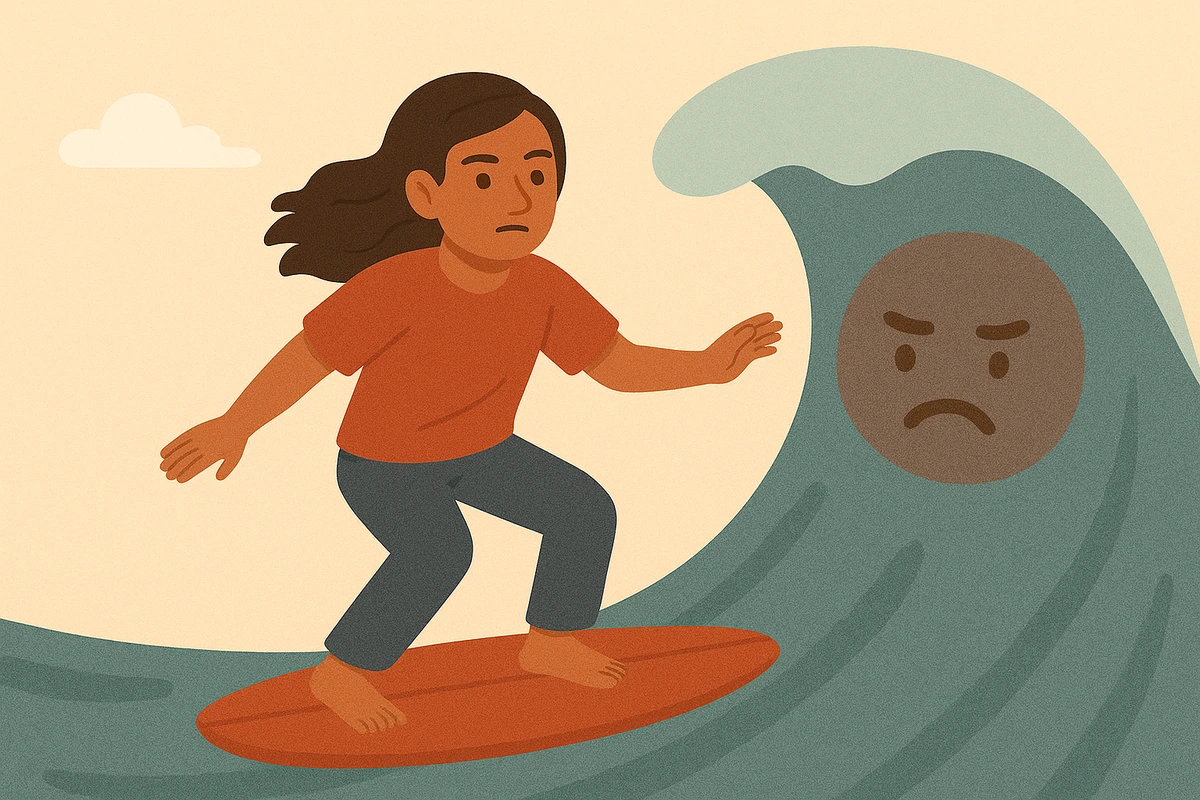Urge surfing involves mindfully observing intense urges or cravings as temporary waves that naturally rise and fall, building tolerance for discomfort while reducing impulsive behaviors within 5-20 minutes of practice.

Intense urges feel like emergencies demanding immediate action—the overwhelming need to check your phone, eat when stressed, avoid difficult conversations, or engage in habits you're trying to change. These powerful internal waves seem to grow stronger the more you resist them, creating internal battles that exhaust your willpower and often end in giving in to behaviors that don't align with your values.
Urge surfing transforms the relationship with intense impulses by teaching you to ride the wave rather than fight against it or automatically surrender to its demands. This mindfulness-based technique leverages the natural tendency of all urges to peak and subside when observed without resistance. Research demonstrates that urge surfing significantly reduces addictive behaviors, anxiety, and impulsive actions while building emotional regulation skills.
Urge surfing operates through multiple interconnected neurobiological and psychological mechanisms that fundamentally alter how the brain responds to intense impulses and cravings. The core effectiveness stems from what neuroscientists call "extinction learning" - the process by which urges naturally diminish when not reinforced through behavioral action.
The technique leverages the neurobiological reality that all urges follow predictable patterns - they rise in intensity, reach a peak, and naturally subside regardless of whether action is taken. Brain imaging studies show that urges activate reward and stress circuits, but these neural patterns automatically return to baseline when not reinforced through behavior.
One fundamental mechanism involves what researchers call "response prevention" - deliberately not acting on urges while maintaining awareness of internal experiences. This process teaches the brain that urges are temporary experiences rather than emergencies requiring immediate behavioral response.
The practice works through what mindfulness researchers term "metacognitive awareness" - observing urges as mental and physical events rather than being controlled by them unconsciously. This awareness creates psychological distance between the observer (you) and the observed (urge sensations).
Urge surfing leverages what psychologists call "distress tolerance" - the capacity to experience difficult emotions and sensations without immediately seeking relief through potentially harmful behaviors. Studies demonstrate that individuals with higher distress tolerance show greater success in addiction recovery and emotional regulation.
The wave metaphor activates what cognitive scientists call "conceptual blending" - using familiar physical experiences (ocean waves) to understand abstract psychological phenomena (urges). This metaphor provides concrete framework for relating to intangible internal experiences.
From a behavioral perspective, urge surfing interrupts what addiction researchers call "automatic behavioral chains" - sequences of thoughts, emotions, and actions that lead from urge to problematic behavior. The technique inserts conscious choice points where automatic patterns can be interrupted.
Additionally, the practice builds what neuroscientists term "prefrontal cortex strength" - the brain region responsible for executive function, impulse control, and conscious decision-making. Regular urge surfing practice literally strengthens neural circuits associated with self-regulation and conscious choice.
"My urges feel too strong to just observe": Start with smaller urges and build tolerance gradually. Very intense urges may require additional support like professional therapy, medication, or crisis intervention. Urge surfing is most effective as part of comprehensive treatment.
"I keep acting on urges despite trying to surf them": This is normal during early learning. Each attempt builds skills even if not immediately successful. Consider removing environmental triggers and seeking additional support for particularly challenging urges.
"Observing urges makes them feel more intense": Initial awareness can temporarily increase urge intensity as unconscious patterns become conscious. This typically decreases with practice as you develop comfort with urge observation.
"I don't know how to tell when an urge is really over": Urges often decrease gradually rather than disappearing completely. Look for reduced physical tension, decreased mental preoccupation, and ability to engage in other activities without urge interference.
"Urge surfing works sometimes but not others": Effectiveness varies based on urge intensity, stress levels, and practice experience. Partial success still builds skills - aim for progress rather than perfection in urge management.
"I worry that not acting on urges is just suppression": Urge surfing involves accepting and observing urges rather than suppressing them. The goal is conscious choice rather than automatic reaction or effortful elimination of urge experiences.